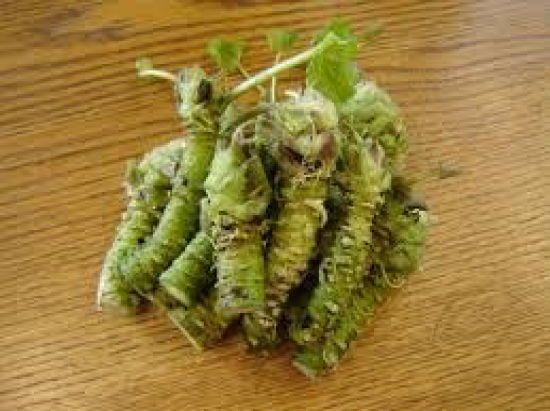9.2: Flavorings - Herbs and Spices
- Page ID
- 21868
\( \newcommand{\vecs}[1]{\overset { \scriptstyle \rightharpoonup} {\mathbf{#1}} } \)
\( \newcommand{\vecd}[1]{\overset{-\!-\!\rightharpoonup}{\vphantom{a}\smash {#1}}} \)
\( \newcommand{\id}{\mathrm{id}}\) \( \newcommand{\Span}{\mathrm{span}}\)
( \newcommand{\kernel}{\mathrm{null}\,}\) \( \newcommand{\range}{\mathrm{range}\,}\)
\( \newcommand{\RealPart}{\mathrm{Re}}\) \( \newcommand{\ImaginaryPart}{\mathrm{Im}}\)
\( \newcommand{\Argument}{\mathrm{Arg}}\) \( \newcommand{\norm}[1]{\| #1 \|}\)
\( \newcommand{\inner}[2]{\langle #1, #2 \rangle}\)
\( \newcommand{\Span}{\mathrm{span}}\)
\( \newcommand{\id}{\mathrm{id}}\)
\( \newcommand{\Span}{\mathrm{span}}\)
\( \newcommand{\kernel}{\mathrm{null}\,}\)
\( \newcommand{\range}{\mathrm{range}\,}\)
\( \newcommand{\RealPart}{\mathrm{Re}}\)
\( \newcommand{\ImaginaryPart}{\mathrm{Im}}\)
\( \newcommand{\Argument}{\mathrm{Arg}}\)
\( \newcommand{\norm}[1]{\| #1 \|}\)
\( \newcommand{\inner}[2]{\langle #1, #2 \rangle}\)
\( \newcommand{\Span}{\mathrm{span}}\) \( \newcommand{\AA}{\unicode[.8,0]{x212B}}\)
\( \newcommand{\vectorA}[1]{\vec{#1}} % arrow\)
\( \newcommand{\vectorAt}[1]{\vec{\text{#1}}} % arrow\)
\( \newcommand{\vectorB}[1]{\overset { \scriptstyle \rightharpoonup} {\mathbf{#1}} } \)
\( \newcommand{\vectorC}[1]{\textbf{#1}} \)
\( \newcommand{\vectorD}[1]{\overrightarrow{#1}} \)
\( \newcommand{\vectorDt}[1]{\overrightarrow{\text{#1}}} \)
\( \newcommand{\vectE}[1]{\overset{-\!-\!\rightharpoonup}{\vphantom{a}\smash{\mathbf {#1}}}} \)
\( \newcommand{\vecs}[1]{\overset { \scriptstyle \rightharpoonup} {\mathbf{#1}} } \)
\( \newcommand{\vecd}[1]{\overset{-\!-\!\rightharpoonup}{\vphantom{a}\smash {#1}}} \)
\(\newcommand{\avec}{\mathbf a}\) \(\newcommand{\bvec}{\mathbf b}\) \(\newcommand{\cvec}{\mathbf c}\) \(\newcommand{\dvec}{\mathbf d}\) \(\newcommand{\dtil}{\widetilde{\mathbf d}}\) \(\newcommand{\evec}{\mathbf e}\) \(\newcommand{\fvec}{\mathbf f}\) \(\newcommand{\nvec}{\mathbf n}\) \(\newcommand{\pvec}{\mathbf p}\) \(\newcommand{\qvec}{\mathbf q}\) \(\newcommand{\svec}{\mathbf s}\) \(\newcommand{\tvec}{\mathbf t}\) \(\newcommand{\uvec}{\mathbf u}\) \(\newcommand{\vvec}{\mathbf v}\) \(\newcommand{\wvec}{\mathbf w}\) \(\newcommand{\xvec}{\mathbf x}\) \(\newcommand{\yvec}{\mathbf y}\) \(\newcommand{\zvec}{\mathbf z}\) \(\newcommand{\rvec}{\mathbf r}\) \(\newcommand{\mvec}{\mathbf m}\) \(\newcommand{\zerovec}{\mathbf 0}\) \(\newcommand{\onevec}{\mathbf 1}\) \(\newcommand{\real}{\mathbb R}\) \(\newcommand{\twovec}[2]{\left[\begin{array}{r}#1 \\ #2 \end{array}\right]}\) \(\newcommand{\ctwovec}[2]{\left[\begin{array}{c}#1 \\ #2 \end{array}\right]}\) \(\newcommand{\threevec}[3]{\left[\begin{array}{r}#1 \\ #2 \\ #3 \end{array}\right]}\) \(\newcommand{\cthreevec}[3]{\left[\begin{array}{c}#1 \\ #2 \\ #3 \end{array}\right]}\) \(\newcommand{\fourvec}[4]{\left[\begin{array}{r}#1 \\ #2 \\ #3 \\ #4 \end{array}\right]}\) \(\newcommand{\cfourvec}[4]{\left[\begin{array}{c}#1 \\ #2 \\ #3 \\ #4 \end{array}\right]}\) \(\newcommand{\fivevec}[5]{\left[\begin{array}{r}#1 \\ #2 \\ #3 \\ #4 \\ #5 \\ \end{array}\right]}\) \(\newcommand{\cfivevec}[5]{\left[\begin{array}{c}#1 \\ #2 \\ #3 \\ #4 \\ #5 \\ \end{array}\right]}\) \(\newcommand{\mattwo}[4]{\left[\begin{array}{rr}#1 \amp #2 \\ #3 \amp #4 \\ \end{array}\right]}\) \(\newcommand{\laspan}[1]{\text{Span}\{#1\}}\) \(\newcommand{\bcal}{\cal B}\) \(\newcommand{\ccal}{\cal C}\) \(\newcommand{\scal}{\cal S}\) \(\newcommand{\wcal}{\cal W}\) \(\newcommand{\ecal}{\cal E}\) \(\newcommand{\coords}[2]{\left\{#1\right\}_{#2}}\) \(\newcommand{\gray}[1]{\color{gray}{#1}}\) \(\newcommand{\lgray}[1]{\color{lightgray}{#1}}\) \(\newcommand{\rank}{\operatorname{rank}}\) \(\newcommand{\row}{\text{Row}}\) \(\newcommand{\col}{\text{Col}}\) \(\renewcommand{\row}{\text{Row}}\) \(\newcommand{\nul}{\text{Nul}}\) \(\newcommand{\var}{\text{Var}}\) \(\newcommand{\corr}{\text{corr}}\) \(\newcommand{\len}[1]{\left|#1\right|}\) \(\newcommand{\bbar}{\overline{\bvec}}\) \(\newcommand{\bhat}{\widehat{\bvec}}\) \(\newcommand{\bperp}{\bvec^\perp}\) \(\newcommand{\xhat}{\widehat{\xvec}}\) \(\newcommand{\vhat}{\widehat{\vvec}}\) \(\newcommand{\uhat}{\widehat{\uvec}}\) \(\newcommand{\what}{\widehat{\wvec}}\) \(\newcommand{\Sighat}{\widehat{\Sigma}}\) \(\newcommand{\lt}{<}\) \(\newcommand{\gt}{>}\) \(\newcommand{\amp}{&}\) \(\definecolor{fillinmathshade}{gray}{0.9}\)Herbs and spices are used as flavorings. Herbs refer to the large group of aromatic plants whose leaves, stems or flowers are used to acid flavors to other foods. Most herbs are available fresh or dried. Because drying alters their flavors and aromas, fresh herbs are generally preferred and should be used if possible. Spices are strongly flavored or aromatic portions of plants used as flavorings, condiments or aromatics. Spices are the bark, roots, seeds, buds or berries of plants, most of which grow naturally only in tropical climates. Spices are usually used in their dried form, rarely fresh, and can usually be purchased whole or ground. Some plants- dill, for example- can be used as both an herb (its leaves) and a spice (its seeds).
Herbs
Basil
Basil is considered one of the great culinary herbs. It is available in a variety of "flavors" - cinnamon, garlic, lemon, eve n chocolate- but the most common is sweet basil. Sweet basil has light green, tender leaves and small white flowers. Its flavor is strong, warm and slightly peppery, with a hint of cloves. Basil is used in Mediterranean and some Southeast Asian cuisines and has a special affinity for garlic and tomatoes. When purchasing fresh basil, loo k for bright green leaves; avoid flower buds and wilted or rust-colored leaves. Dried sweet basil is readily available but has a decidedly weaker flavor.
Opal basil is named for its vivid purple color. It has a tougher, crinkled leaf and a medium strong flavor. Opal basil may be substituted for sweet basil in cooking, and its appearance makes it a distinctive garnish.
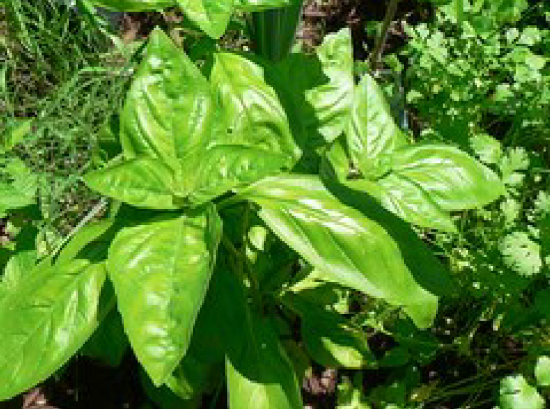
Bay Leaves
Bay, also known as sweet laurel, is a small tree from Asia that produces tough, glossy leaves with a sweet balsamic aroma and peppery flavor. Bay symbolized wisdom and glory in ancient Rome; the leaves were used to form crowns or "laurels" Bay leaves worn by emperors and victorious athletes. In cooking, dried bay leaves are often preferred over the more bitter fresh leaves. Essential in French cuisine, bay leaves are part of the traditional bouquet garni and court bouillon. Whole dried leaves are usually added to a dish at the start of cooking, then removed when sufficient flavor has been extracted the Middle East. Its lacy, fern-like leaves are similar to parsley and can be used as a garnish.
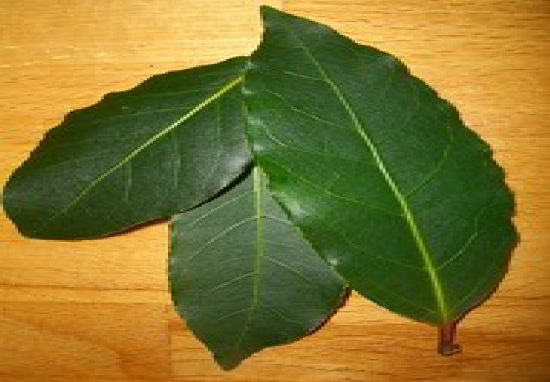
Chervil
Chervil is commonly used in French cuisine and is one of the traditional fines herbes. Chervil's flavor is delicate, similar to parsley but with the distinctive aroma of anise. It should not be heated for long periods.
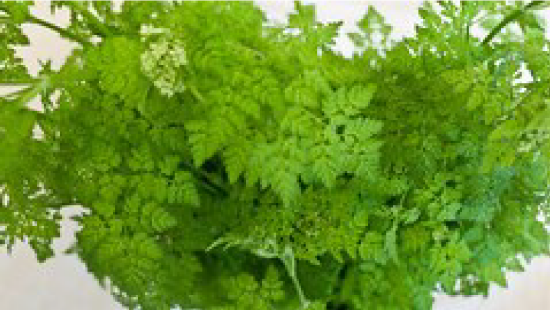
Chives
Chives are perhaps the most delicate and sophisticated members of the onion family. Their hollow, thin grass-green stems grow in clump s and produce round, pale purple flowers, which are use d as a garnish. Chives may be purchased dried, quick-frozen or fresh. They have a mild onion flavor and bright green color. Chives complement eggs, poultry, potatoes, fish and shellfish. They should not be cooked for long, periods or at high temperatures. Chives make an excellent garnish when snipped with scissors or carefully chopped and sprinkled over finished soups or sauces.
Garlic chives, also known as Chinese chives, actually belong to another plant species. They have flat, solid (not hollow) stems and a mild garlic flavor. They may be used in place of regular chives if their garlic flavor is desired.
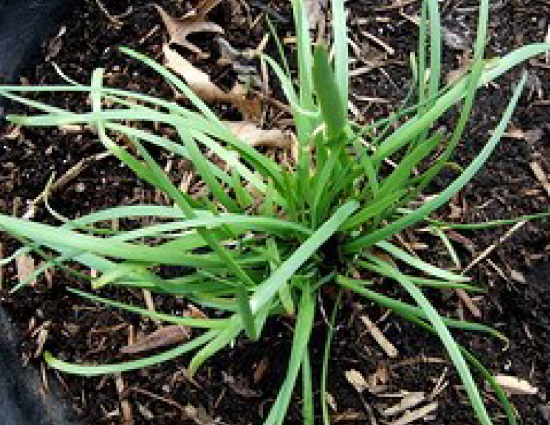
Cilantro
Cilantro is the green leafy portion of the plant that yields seeds known as coriander. The flavors of the two portions of this plant are very different and cannot be substituted for each other. Cilantro, also known as Chinese parsley, is sharp and tangy with a strong aroma and an almost citrus flavor. It is widely used in Asian, Mexican and South American cuisines, especially in salads and sauces. It should not be subjected to heat, and cilantro's flavor is completely destroyed by drying. Do not use yellow or discolored leaves or the tough stems. When used in excess, cilantro can impart a soapy taste to foods.
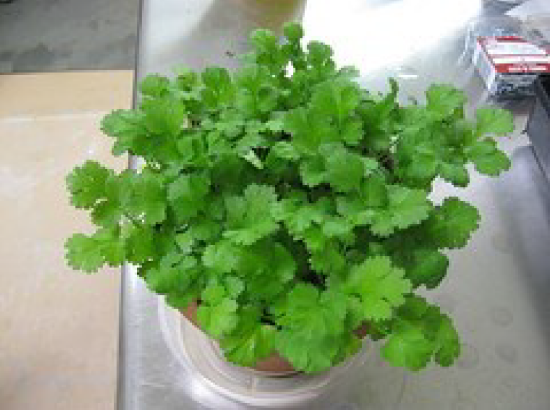
Curry leaves
Curry leaves are the distinctively flavored leaves of a small tree that grows wild in the Himalayan foothills, southern India and Sri Lanka. They look like small shiny bay leaves and have a strong curry-like fragrance and a citrus-curry flavor. Often added to a preparation whole, then removed before serving, they can also be minced or finely chopped for marinades and sauces. Choose fresh bright green leaves, if possible, or frozen leaves; dried leaves have virtually no flavor. Although used in making southern Indian and Thai dishes, curry leaves (also known as neem leaves) must not be confused with curry powder.
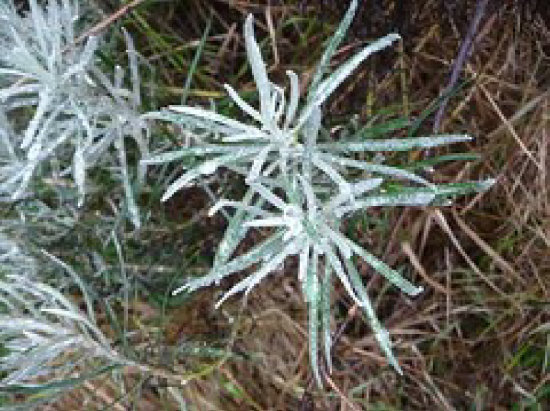
Dill
Dill, a member of the parsley family, has tiny, aromatic, yellow flowers and feathery, delicate blue-green leaves. The leaves taste like parsley, but sharper, with a touch of anise. Dill seeds are flat, oval and brown, with a bitter flavor similar to caraway. Both the seeds and the leaves of the dill plant are used in cooking.
Dill is commonly used in Scandinavian and central European cuisines, particularly with fish and potatoes, mushrooms, and other vegetables. Both leaves and seeds are used in pickling and sour dishes. Dill leaves are available fresh or dried but lose their aroma and flavor during cooking, so add them only after the dish is removed from the heat. Dill seeds are available whole or ground and are used in fish dishes, pickles and breads.
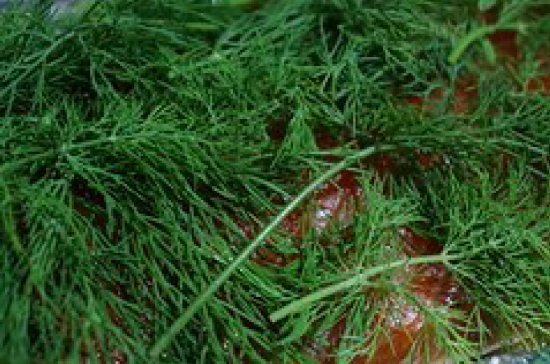
Epazote
Epazote, also known as wormseed or stinkweed, grows wild throughout the Americas. It has a strong aroma similar to kerosene and a wild flavor. Fresh epazote is used in salads and as a flavoring in Mexican and Southwestern cuisines. It is often cooked with beans to reduce their gaseousness. Dried epazote is brewed to make a beverage.
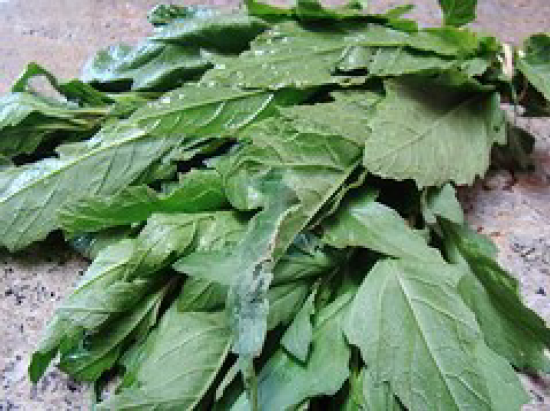
Lavender
Lavender is an evergreen with thin leaves and tall stems bearing spikes of tiny purple flowers. Although lavender is known primarily for its aroma, which is widely used in perfumes, soaps and cosmetics, the flowers are also used as a flavoring, particularly in Middle Eastern cuisines though other cuisines use it as well. These flowers have a sweet, lemony flavor and can be crystallized and used as a garnish. Lavender is also used in jams and preserves and to flavor teas and tisanes.
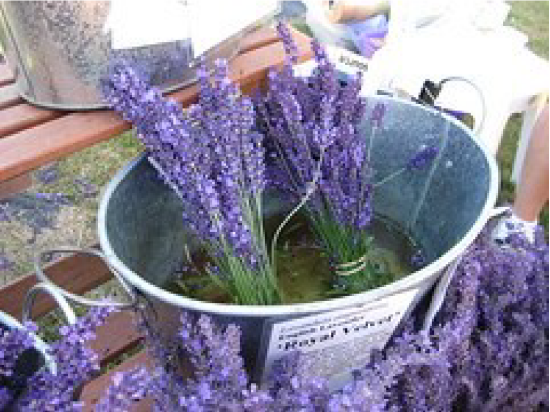
Lemongrass
Lemongrass, also known as citronella grass, is a tropical grass with the strong aroma and flavor of a lemon. It is similar to scallions in appearance but with a woody texture. Only the lower base and white leaf stalks are used. Available fresh or quick-frozen, lemongrass is widely used in Southeast Asian cuisines.
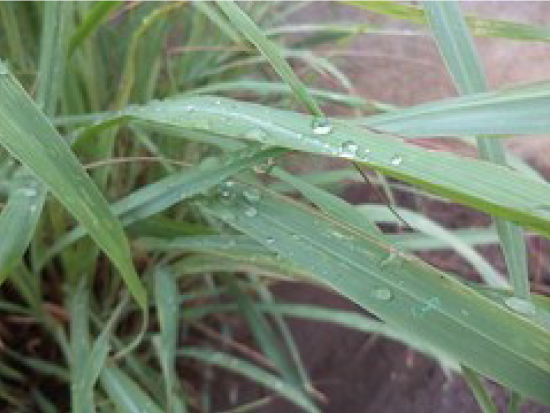
Lime leaves
Lime leaves from a species of thorny lime trees are used much like bay leaves to flavor soups and stews in Thai and other Asian cuisines. These small, dark green leaves have a bright citrus floral aroma. Fragrant lime leaves are available fresh in the United States now that these trees are cultivated domestically.
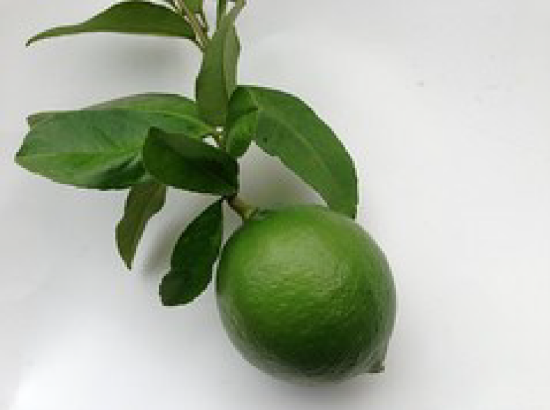
Lovage
Lovage has tall stalks and large dark green celery-like leaves. The leaves, stalks and seeds (which are commonly known as celery seeds) have a strong celery flavor. Also known as, ‘sea parsley’, the leaves and stalks are used in salads and stews and the seeds are used for flavoring.
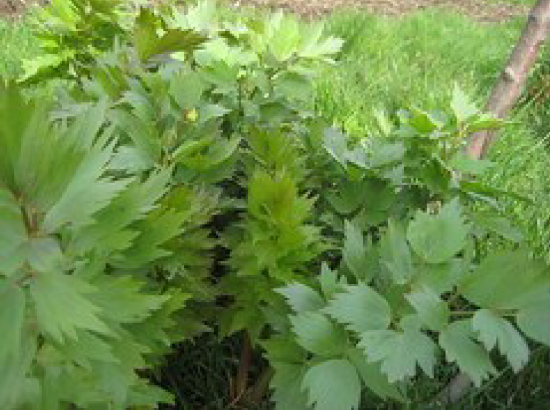
Marjoram
Marjoram, also known as sweet marjoram, is a flowering herb native to the Mediterranean and used since ancient times. Its flavor is similar to thyme but sweeter; it also has a stronger aroma. Marjoram is now used in many European cuisines. Although it is available fresh, marjoram is one of the few herbs whose flavor increases when dried. Wild marjoram is more commonly known as oregano.
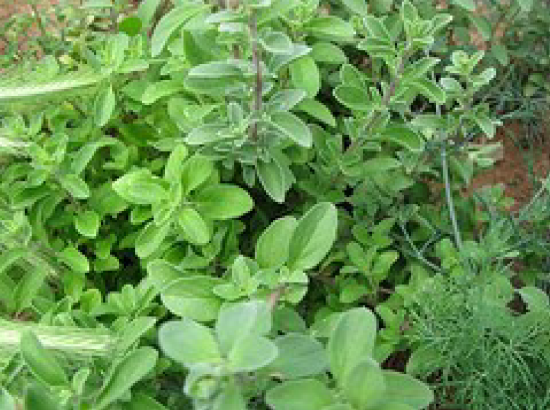
Mint
Mint a large family of herb, includes many species and flavors (even chocolate). Spearmint is the most common garden and commercial variety. It has soft, bright green leaves and a tart aroma and flavor. Mint does not blend well with other herbs, so its use is confined to specific dishes, usually fruits or fatty meats such as lamb. Mint has an affinity for chocolate. It can also be brewed into a beverage or used as a garnish.
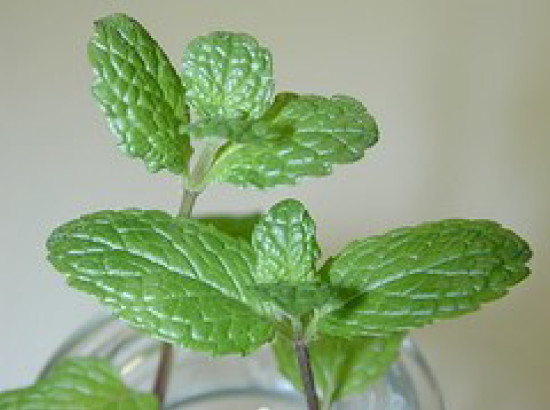
Peppermint
Peppermint has thin, stiff, pointed leaves and a sharper menthol flavor and aroma. Fresh peppermint is used less often in cooking or as a garnish than spearmint, but peppermint oil is a common flavoring in sweets and candies.
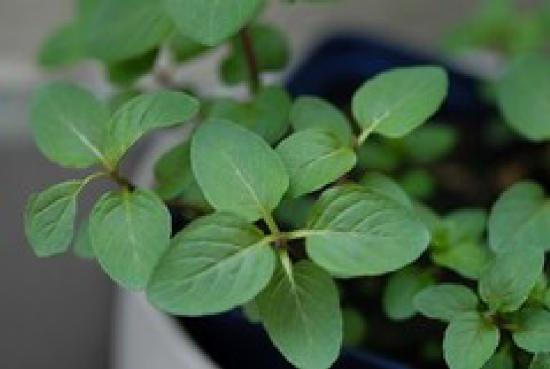
Oregano
Oregano, also known as wild marjoram, is a pungent, peppery herb used in Mediterranean cuisines, particularly Greek and Italian, as well as in Mexican cuisine. It is a classic complement to tomatoes. Oregano's thin, woody stalks bear clumps of tiny, dark green leaves, which are available dried and crushed.
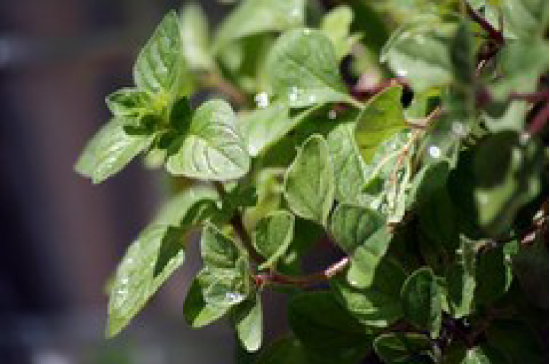
Parsley
Parsley is probably the best-known and most widely used herb in the world. It grows in almost all climates and is available in many varieties, all of which are rich in vitamins and minerals. The most common type in the United States and Northern Europe is curly parsley. It has small curly leaves and a bright green color. Its flavor is tangy and clean. Other cuisines use a variety sometimes known as Italian parsley, which has flat leaves, a darker color and coarser flavor. Curly parsley is a ubiquitous garnish; both types can be used in virtually any food except sweets. Parsley stalks have a stronger flavor than the leaves and are part of the standard bouquet garni. Chopped parsley forms the basis of any fine herb blend.
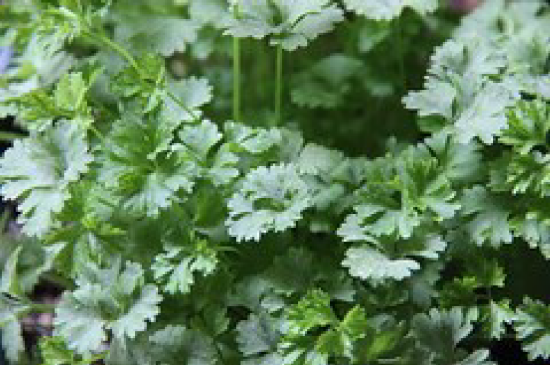
Rosemary
Rosemary is an evergreen bush that grows wild in warm, dry climates worldwide. It has stiff, needlelike leaves; some varieties bear pale blue flowers. It is highly aromatic, with a slight odor of camphor or pine. Rosemary is best used fresh. When dried, it loses flavor, and its leaves become very hard and unpleasant to chew. Whole rosemary stems may be added to a dish such as a stew and then removed when enough flavor has been imparted. They may also be added to a bouquet garni. Rosemary has a great affinity for roasted and grilled meats, especially lamb.
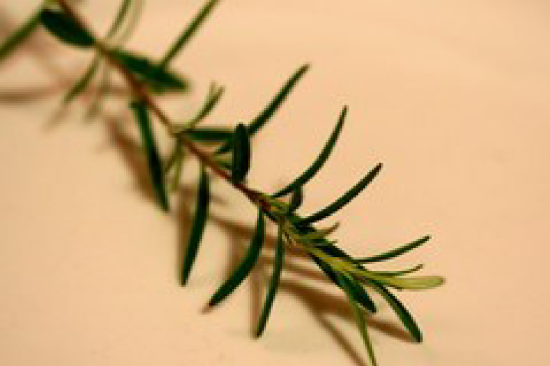
Sage
Sage was used as a medicine for centuries before it entered the kitchen as a culinary herb. Culinary sage has narrow, fuzzy, gray-green leaves and blue flowers. Its flavor is strong and balsamic, with notes of camphor. Sage is used in poultry dishes, with fatty meats or brewed as a beverage. Sage’s strong flavor does not blend well with other herbs. It dries well and is available in whole or chopped leaves or rubbed (coarsely ground).
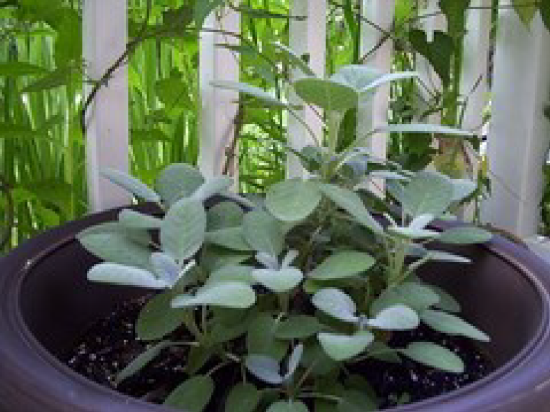
Savory
Savory has been used since ancient times. Its leaves are small and narrow, and it has a sharp, bitter flavor, vaguely like thyme. It dries well and is used in bean dishes, sausages and fine herb blends. While the variety called summer savory is most common and popular, a variety called winter savory is also available.
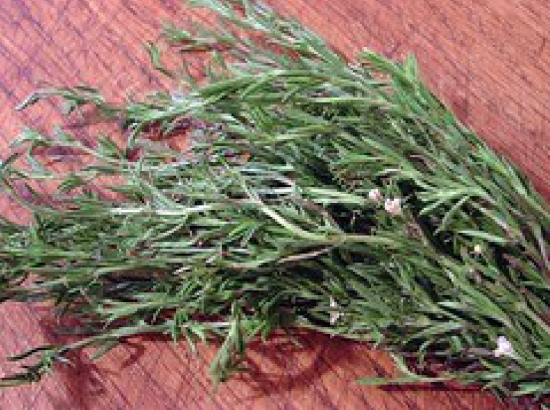
Tarragon
Tarragon is another of the great culinary herbs, is native to Iberia. It is a bushy plant with long, narrow, dark green leaves and tiny gray flowers. Tarragon goes well with fish and tomatoes and is essential in many French dishes such as bearnaise sauce and fine herb blends. Its flavor is strong and diffuses quickly through foods. It is available dried, but drying may cause hay-like flavors to develop.
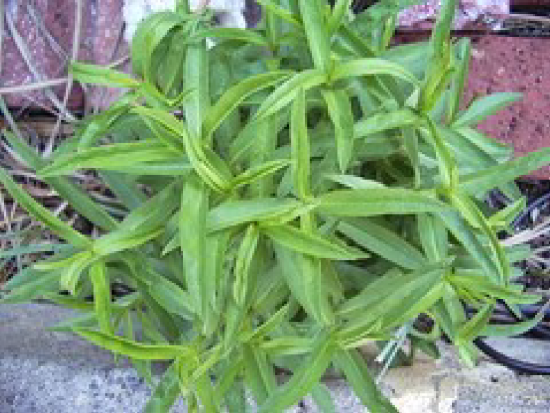
Thyme
Thyme has been popular since 3500 B.C.E., when Egyptians used it as a medicine and for embalming. Thyme is as mall, bushy plant with woody stems, tiny green-gray leaves and purple flowers. Its flavor is strong but refined, with notes of sage. Thyme dries well and complements virtually all types of meat, poultry, fish, shellfish and vegetables. It is often included in a bouquet garni or added to stocks.
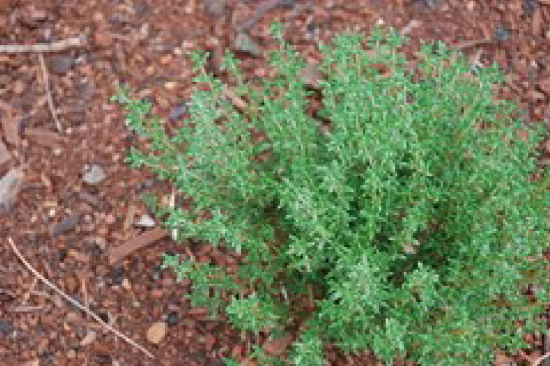
Spices
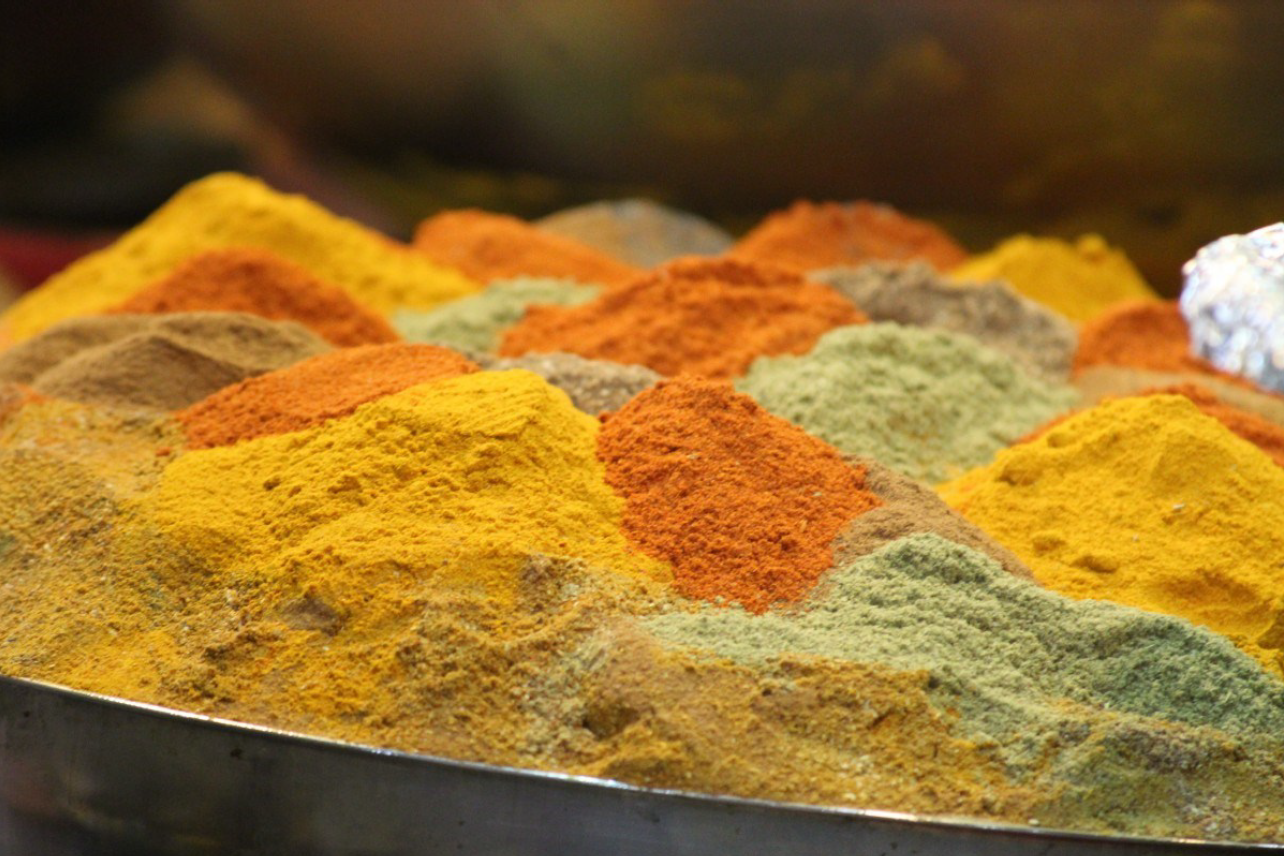
Different cuisines and areas of the world utilize different spices, and spice combinations. See the chart below:
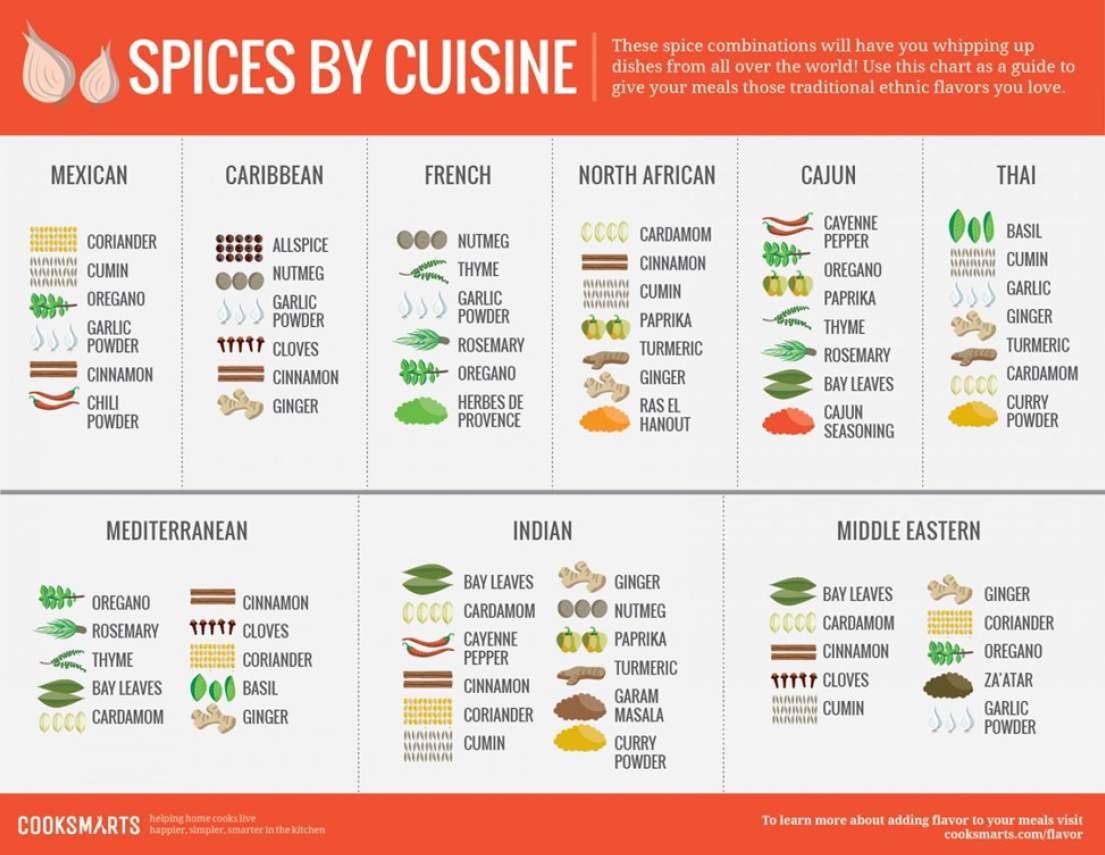
Aleppo pepper
Aleppo pepper (ah-LEHP-oh) is made from bright red chiles grown in Turkey and northern Syria. The sun-dried Aleppo chiles are seeded and crushed, then used as a condiment. It has a sharp, but sweet, fruity flavor, with only mild heat (15,000 Scoville units) Although a member of the capsicum family, Aleppo pepper is used more like ground peppercorns (piper nigrum) than a chile . Also known as Halaby pepper, it acids an authentic Mediterranean flavor and fragrance to foods.
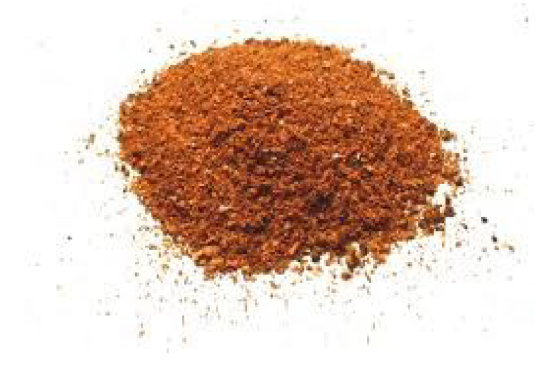
Anise
Anise is native to the eastern Mediterranean is grown commercially in warm climates throughout India, North Africa and southern Europe. The tiny, gray-green egg-shaped seeds have a distinctively strong, sweet flavor, similar to licorice and fennel. When anise seeds turn brown, they are stale and should be discarded. Anise is used in pastries as well as fish, shellfish and vegetable dishes, and is commonly used in alcoholic beverages (for example, Pernod and ouzo). The green leaves of the anise plant are occasionally used fresh as an herb or in salads.
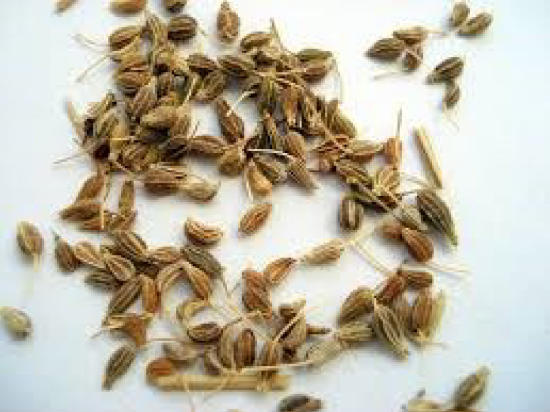
Star anise
Star anise, also known as Chinese anise, is the dried, star-shaped fruit of a Chinese magnolia tree. Although it is botanically unrelated, its flavor is similar to anise seeds but bitterer and pungent. It is an essential flavor in many Chinese dishes and one of the components of five-spice powder.
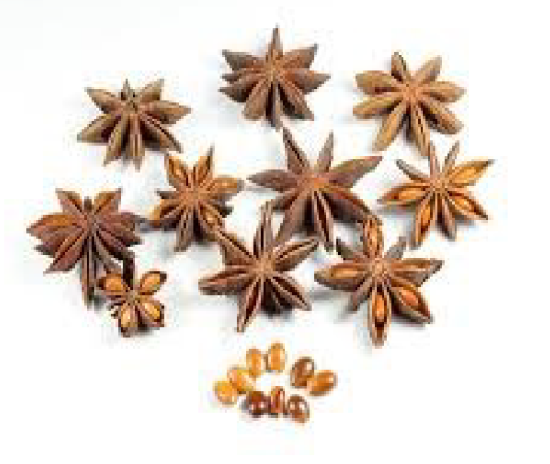
Annatto
Annatto seeds are the small, brick red triangular seeds of a shrub from South America and the Caribbean. Annatto seeds add a mild, peppery flavor to rice, fish and shellfish dishes and are crushed to make Mexican achiote paste. Because they impart a bright yellow-orange color to foods, annatto seeds are commonly used as a natural food coloring, especially in cheeses and margarine.
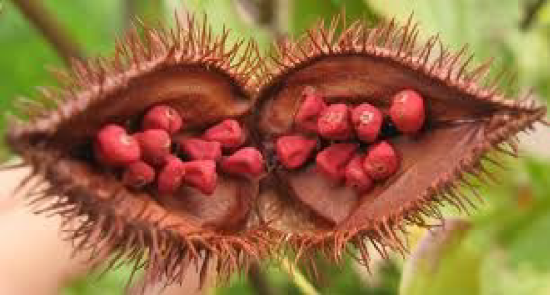
Asafetida
Asafetida is a pale brown resin made from the sap of a giant fennel-like plant native to India and Iran. Also known as devil's dung, it has a garlicky flavor and a strong unpleasant fetid aroma (the aroma is not transferred to food being flavored). Available powdered or in lump form, it is used- very sparingly as a flavoring in Indian and Middle Eastern cuisines.
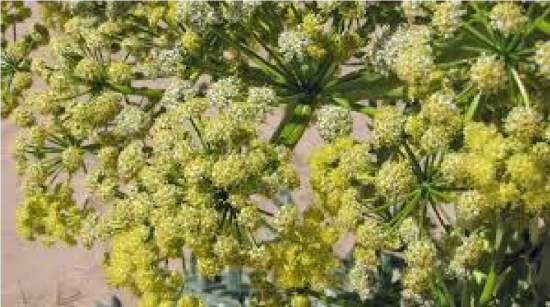
Capers
Capers come from a small bush that grows wild throughout the Mediterranean basin. Its unopened flower buds have been pickled and used as a condiment for thousands of years. Fresh capers are not used, as the sharp, salty, sour flavor develops only after curing in strongly salted white vinegar. The finest capers are the smallest, known as nonpareils, which are produced in France's Provence region. Capers are used in a variety of sauces (tartare, remoulade) and are excellent with fish and game. Capers will keep for long periods if moistened by their origin al liquid. Do not acid or substitute vinegar, however, as this causes the capers to spoil.
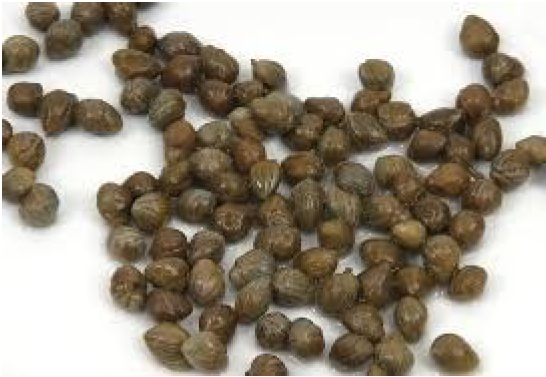
Caraway
Caraway is perhaps the world's oldest spice. Its use has been traced to the Stone Age, and seeds have been found in ancient Egyptian tombs. The caraway plant grows wild in Europe and temperate regions of Asia. It produces a small, crescent-shaped brown seed with the peppery flavor of rye. Seeds may be purchased whole or ground. (The leaves have a mild, bland flavor and are rarely use d in cooking.) Caraway is a ‘European’ flavor, used extensively in German and Austrian dishes, particularly breads, meats and cabbage. It is also used in alcoholic beverages and cheeses.
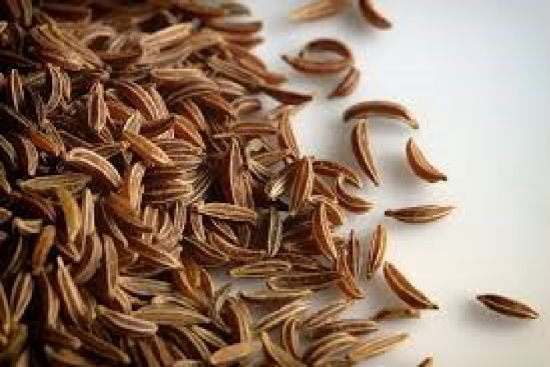
Cardamom
Cardamom is one of the most expensive spices, second only to saffron in cost. Its seeds are encased in 1/4-inch- (6-millimeter) long light green or brown pods. Cardamom is highly aromatic. Its flavor, lemony with notes of camphor, is quite strong and is used in both sweet and savory dishes. Cardamom is widely used in Indian and Middle Eastern cuisines, where it is also used to flavor coffee. Scandinavians use cardamom to flavor breads and pastries. Ground cardamom loses its flavor rapidly and is easily adulterated, so it is best to purchase whole seeds and grind your own as needed.
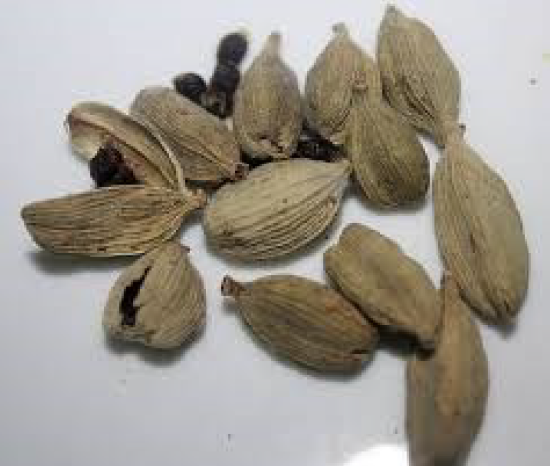
Chiles
Chiles, including paprika, chile peppers, bell peppers and cayenne, are members of the capsicum plant family. Although cultivated for thousands of years in the West Indies and Americas, capsicum peppers were unknown in the Old World prior to Spanish explorations during the 15th century.
Capsicum
Capsicum peppers come in all shapes and sizes, with a wide range of flavors, from sweet to extremely hot. Some capsicums are used as a vegetable, while others are dried, ground and used as a spice.
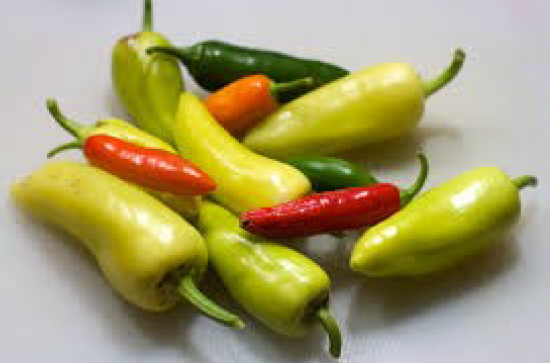
Cayenne
Cayenne, sometimes simply labeled "red pepper," is ground from a blend of several particularly hot types of dried red chile peppers. Its flavor is extremely hot and pungent; it has a bright orange-red color and fine texture.
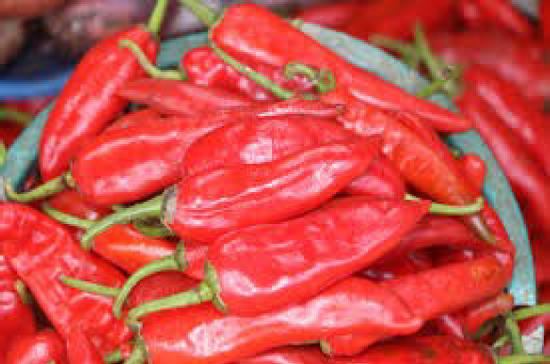
Paprika
Paprika, also known as Hungarian pepper, is a bright reel powder ground from specific varieties of red-ripened and dried chiles. Paprika's flavor ranges from sweet to pungent; its aroma is distinctive and strong. It is essential to many Spanish and eastern European dishes. Mild paprika is meant to be used in generous quantities and may be sprinkled on prepared foods as a garnish.
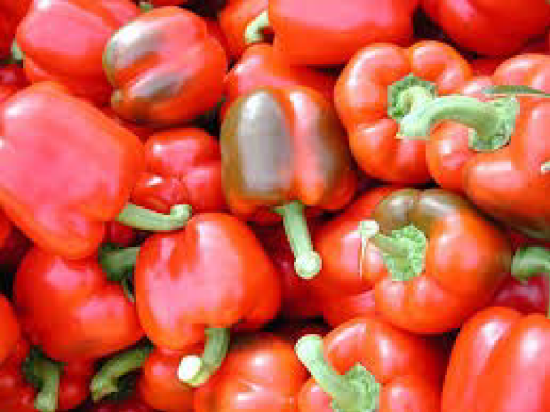
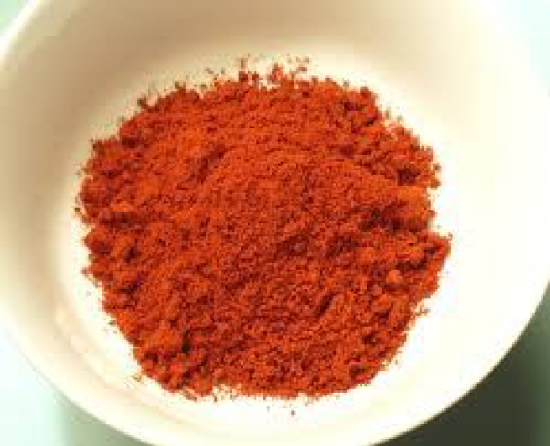
Plant Spice
Chile powders are made from a wide variety of dried chile peppers, ranging from sweet and mild to extremely hot and pungent. The finest pure chile powders come from dried chiles that are simply roasted, ground and sieved. Commercial chilli powder, an American invention, is actually a combination of spices- oregano, cumin, garlic and other flavorings- intended for use in Mexican dishes. Each brand is different and should be sampled before using.
Crushed chiles
Crushed chiles, also known as chile flakes, are blended from dried, coarsely crushed chiles. They are quite hot and are used in sauces and meat dishes.
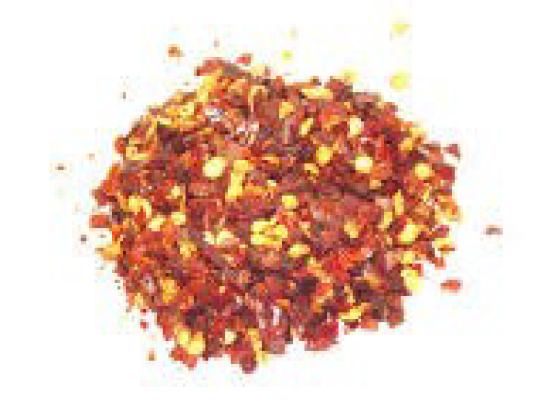
Cinnamon
Cinnamon and its cousin cassia are among the oldest known spices: Cinnamon's use is recorded in China as early as 2500 B.C.E., and the Far East still produces most of these products. Both cinnamon and cassia come from the bark of small evergreen trees, peeled from branches in thin layers and dried in the sun. High-quality cinnamon should be pale brown and thin, rolled up like paper into sticks known as quills. Cassia is coarser and has a stronger, less subtle flavor than cinnamon. Consequently, it is cheaper than true cinnamon. Cinnamon is usually purchased ground because it is difficult to grind.
Cinnamon sticks are used when long cooking times allow for sufficient flavor to be extracted (for example in stews or curries). Cinnamon's flavor is most often associated with pastries and sweets, but it has a great Ground Cinnamon and affinity for lamb and spicy dishes. Labeling laws do Cinnamon Sticks not require that packages distinguish between cassia and cinnamon, so most of what is sold as cinnamon in the United States is actually cassia, blended for consistent flavor and aroma.
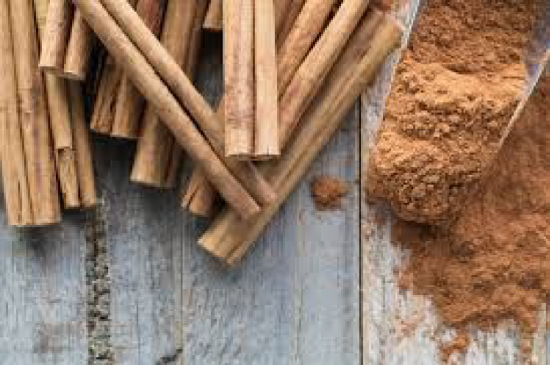
Cloves
Cloves are the unopened buds of evergreen trees that flourish in muggy tropical regions. When dried, whole cloves have hard, sharp prongs that can be used to push them into other foods, such as onions or fruit, in order to provide flavor. Cloves are extremely pungent, with a sweet, astringent aroma. A small amount provides a great deal of flavor. Cloves are used in desserts and meat dishes, preserves and liquors. They may be purchased whole or ground.
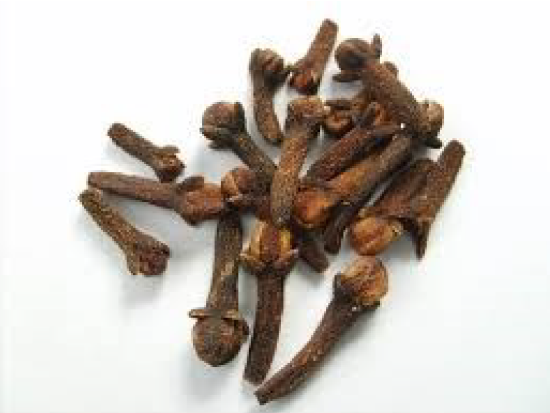
Coriander
Coriander seeds come from the cilantro plant. They are round and beige, with a distinctive sweet, spicy flavor and strong aroma. Unlike other plants in which the seeds and the leaves carry the same flavor and aroma, coriander and cilantro are very different. Coriander seeds are available whole or ground and are frequently used in Indian cuisine and pickling mixtures.
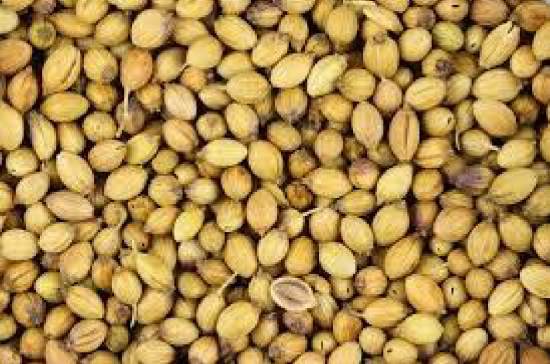
Cumin
Cumin is the seed of a small delicate plant of the parsley family that grows in North Africa and the Middle East. The small seeds are available whole or ground and look (but do not taste) like caraway seeds. Cumin has a strong earthy flavor and tends to dominate any dish in which it is included. It is used in Indian, Middle Eastern and Mexican cuisines, in sausages and a few cheeses.
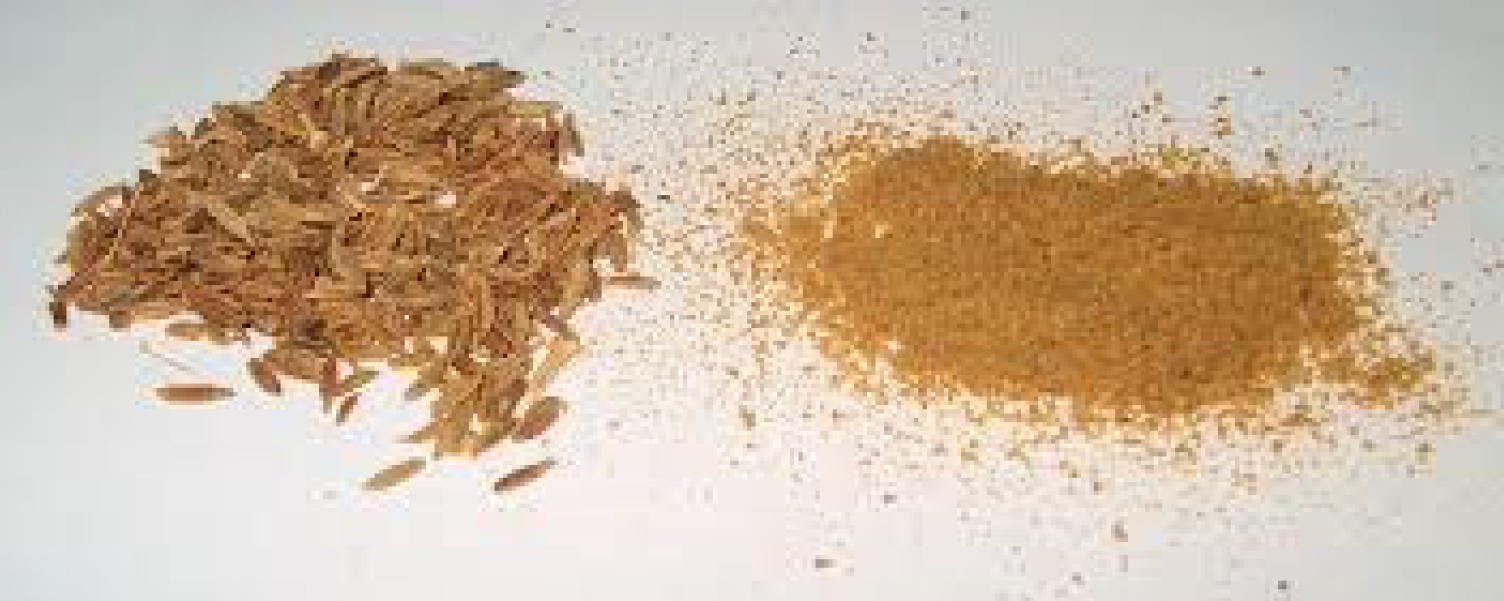
Fennel
Fennel is a perennial plant with feathery leaves and tiny flowers long cultivated in India and China as a medicine and cure for witchcraft. Its seeds are greenish brown with prominent ridges and short, hair-like fibers. Their taste and aroma are similar to anise, though not as sweet. Whole seeds are widely used in Italian stews and sausages; central European cuisines use fennel with fish, pork, pickles and vegetables. Ground seeds can also be used in breads, cakes and cookies. The same plant produces a bulbous stalk used as a vegetable.
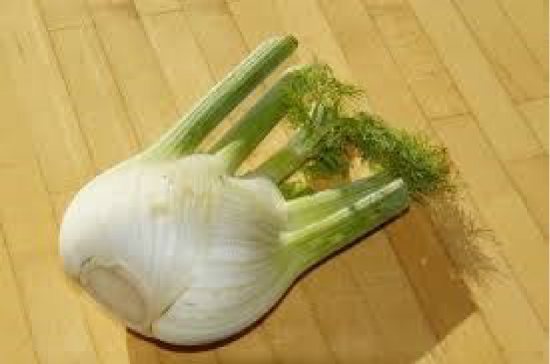
Fenugreek
Fenugreek is grown in Mediterranean countries since ancient times, is a small, beanlike plant with a tiny flower. The seeds, are available whole or ground, are pebble shaped and transfer their pale orange color to the foods with which they are cooked. Their flavor is bittersweet, like burnt sugar with a bitter aftertaste. Fenugreek is a staple in Indian cuisines, especially curries and chutneys.
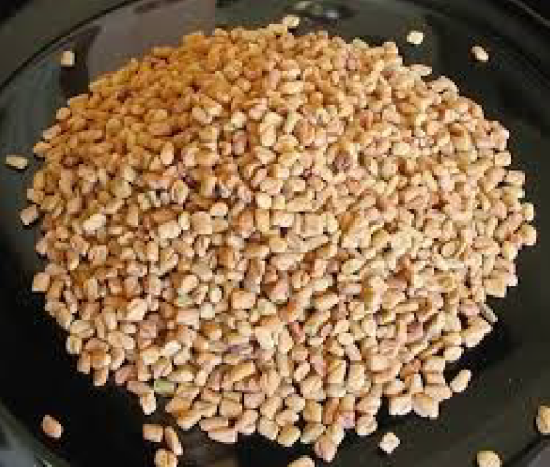
File powder
File powder is the dried, ground leaf of the sassafras plant. Long used by Choctaw Indians, it is now most commonly used as a thickener and flavoring in Cajun and Creole cuisines. File is also used as a table condiment to acid a spicy note to stews, gumbo and the like. The powder forms strings if allowed to boil, so it should be added during the last minutes of cooking.
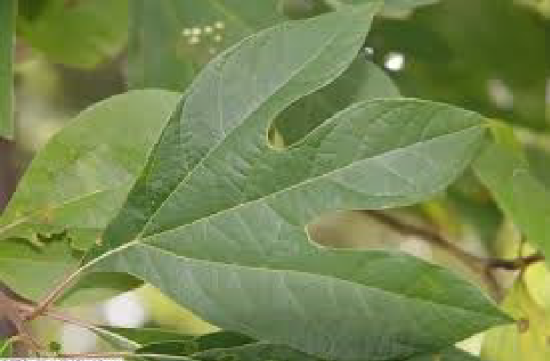
Galangal
Galangal is the rhizome of a plant native to India and Southeast Asia. The rhizome has a reddish skin, an orange or whitish flesh and a peppery, ginger-like flavor and piney aroma. Also known as galanga root, Thai ginger and Laos ginger, it is peeled and crushed for use in Thai, and Indonesian cuisines. Fresh ginger is an appropriate substitute.
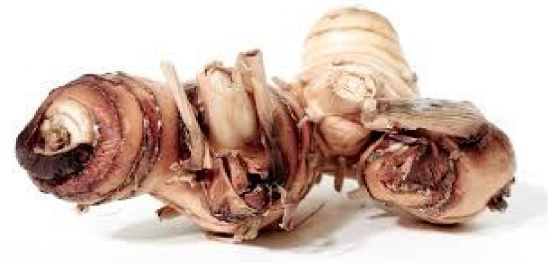
Ginger
Ginger is a well-known spice obtained from the rhizome of a tall, flowering tropical plant. Fresh ginger is known as a "hand" because it looks vaguely like a group of knobby fingers. It has grayish-tan skin and a pale yellow, fibrous interior. Fresh ginger should be plump and firm with smooth skin. It should keep for about a month under refrigeration. Its flavor is fiery but sweet, with notes of lemon and rosemary. Fresh ginger is widely available and is used in Indian and Asian cuisines. It has a special affinity for chicken, beef and curries. Ginger is also available peeled and pickled in vinegar, candied in sugar or preserved in alcohol or syrup. Dried, ground ginger is a fine yellow powder widely used in pastries. Its flavor is spicier and not as sweet as fresh ginger.
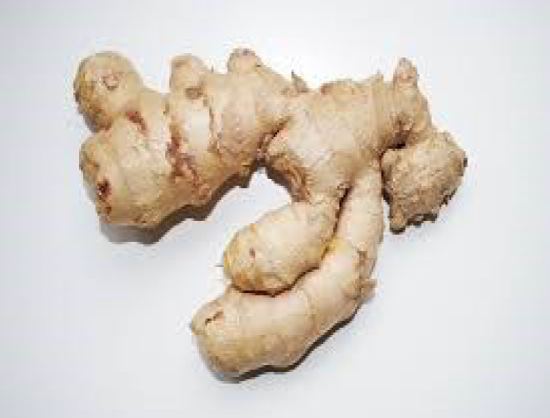
Grains of Paradise
Grains of paradise are the seeds of a perennial reed-like plant indigenous to the West African coast. Related to cardamom, grains of paradise have a spicy, warm and slightly bitter flavor, similar to peppercorns. In fact, grains of paradise were traditionally used in place of black pepper and are also known as Guinea pepper or Melegueta pepper. Now enjoying a resurgence in popularity and increased availability, they are ground and used primarily in West African and Maghreb dishes, and in the spice blend known as ras el hanout.
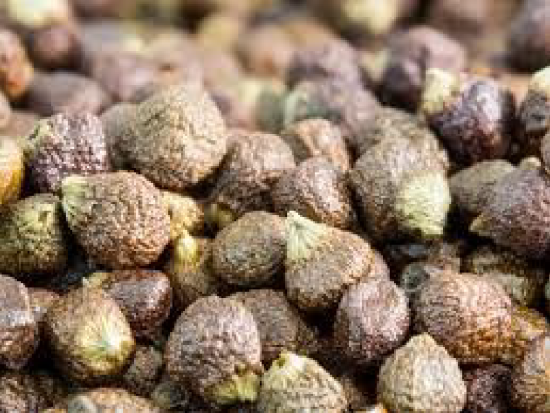
Horseradish
Horseradish is the large off-white taproot of a hardy perennial (unrelated to radishes) that flourishes in cool climates. Fresh roots should be firm and plump; they will not have the distinctive horseradish aroma unless cut or bruised. The outer skin and inner core of a fresh horseradish root can have an unpleasant flavor and should be discarded. Typically used in Russian and Central European cuisines, especially as an accompaniment to roasted meats and fish and shellfish dishes, horseradish is usually served grated, creamed into a sauce or as part of a compound butter or mustard preparation. If horseradish is cooked, heat can destroy its flavor and pungency, so any horseradish should be added near the end of cooking.
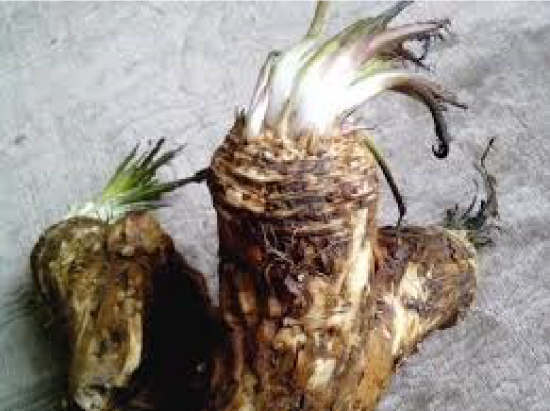
Juniper
Juniper is an evergreen bush grown throughout the Northern Hemisphere. It produces round purple berries with a sweet flavor similar to pine. Juniper berries are used for flavoring gin and other alcoholic beverages, and are crushed and incorporated in game dishes, particularly venison and wild boar.
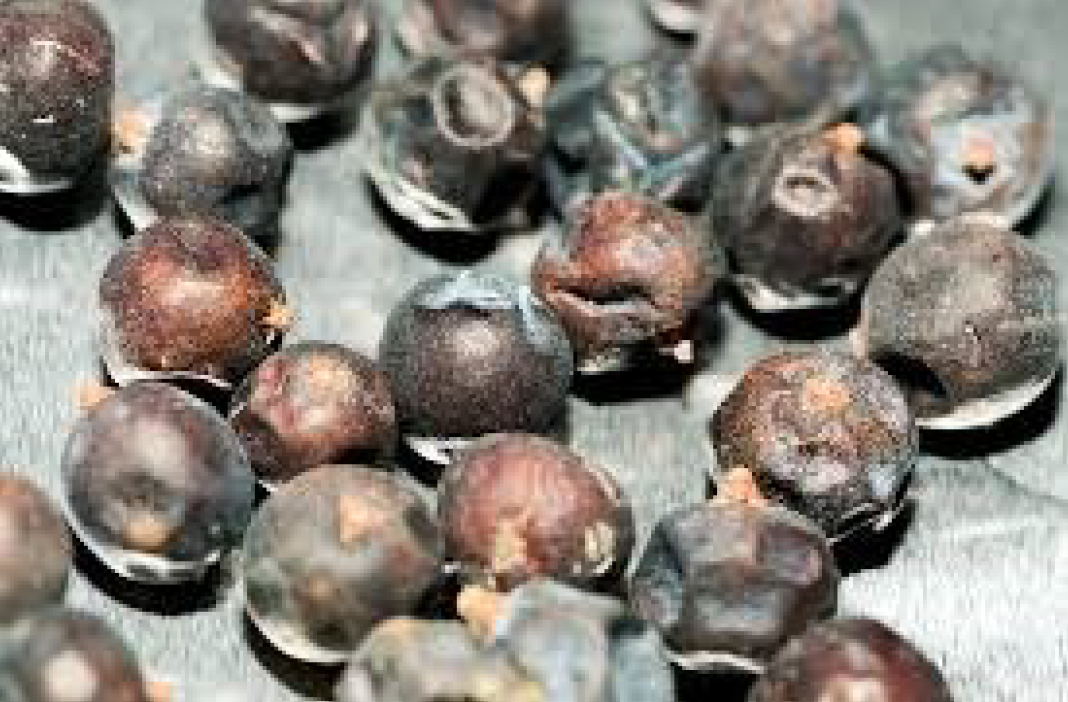
Mustard Seeds
Mustard seeds, available in black, brown and yellow, come from three different plants in the cabbage family. Mustard seeds are small, hard spheres with a bitter flavor. The seeds have no aroma, but their flavor is sharp and fiery hot. Yellow seeds have the mildest and black seeds the strongest flavor. All are sold whole and can be crushed for cooking. Mustard seeds are a standard component of pickling spices and are processed and blended for prepared mustards, which we discuss later. Ground or city mustard is a bright yellow powder made from a blend of ground seeds, wheat flour and turmeric.
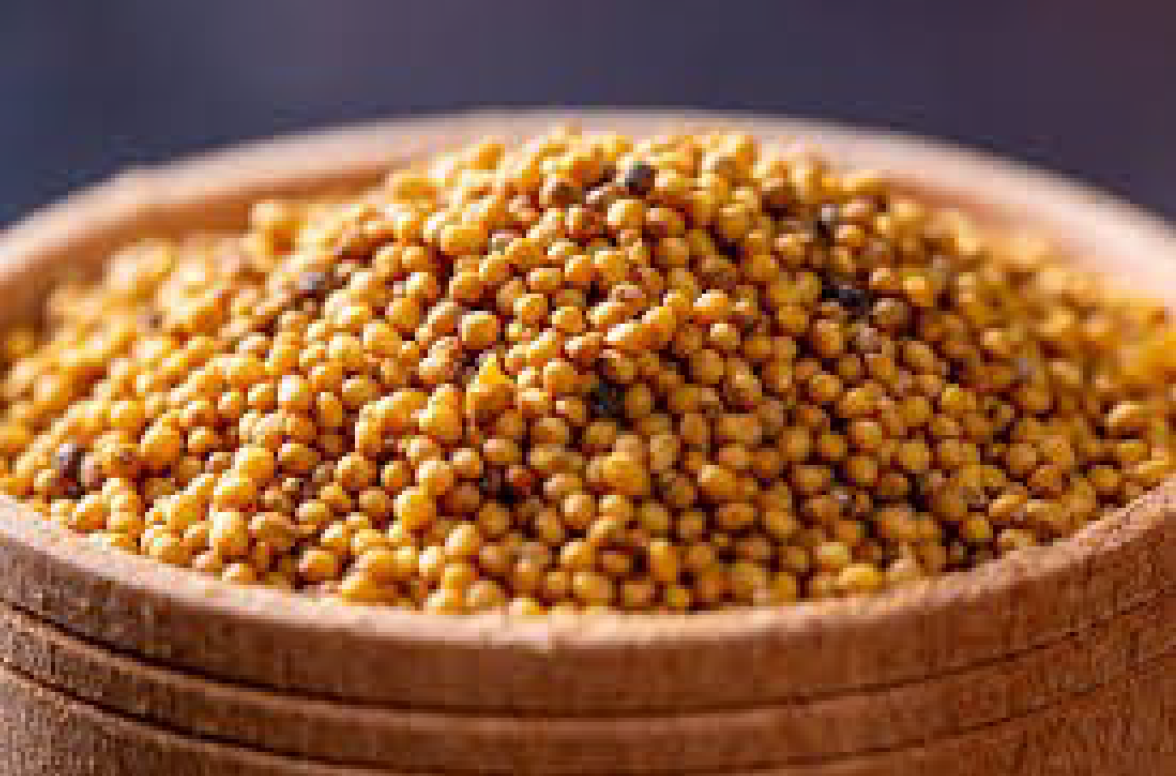
Nutmeg
Nutmeg and mace come from the yellow plum-like fruit of a large tropical evergreen. These fruits are dried and opened to reveal the seed known as nutmeg. A bright red lacy coating or aril surrounds the seed; the aril is the spice mace. Whole nutmegs are oval and look rather like a piece of smooth wood. The flavor and aroma of nutmeg are strong and sweet, and a small quantity provides a great deal of flavor. Nutmeg should be grated directly into a dish as needed; once grated, flavor loss is rapid. Nutmeg is used in many European cuisines, mainly in pastries and sweets, but is also important in meat and savory dishes.
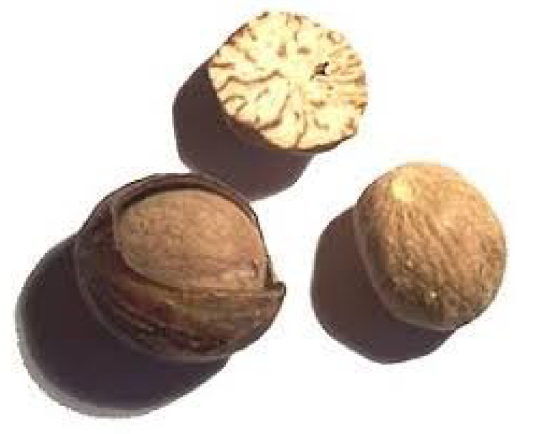
Mace
Mace is an expensive spice, with a flavor similar to nutmeg but more refined. It is almost always purchased ground and retains its flavor longer than other ground spices. Mace is used primarily in pastry items.
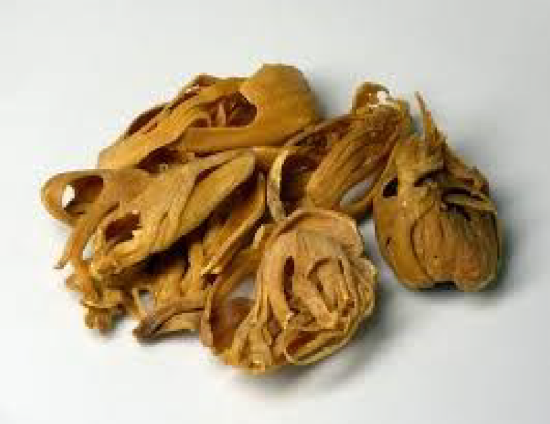
Peppercorns
Peppercorns are the berries of a vine plant (piper nigrum) native to tropical Asia. Peppercorns should not be confused with the chile (capsicum) peppers discussed earlier. Peppercorns vary in size, color, pungency and flavor. Many of these differences are the result of variations in climate and growing conditions. Good-quality pepper is expensive and should be purchased whole and ground fresh in a pepper mill as needed. Whole peppercorns will last indefinitely if kept dry. They should be stored well covered in a cool, dark place.
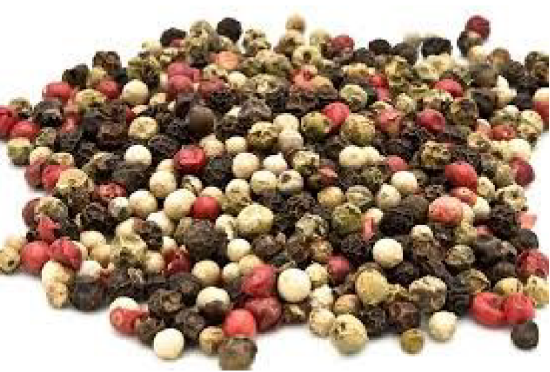
Black and white peppercorns
Black and white peppercorns are produced from the same plant, but are picked and processed differently. For black peppercorns, the berries are picked when green and simply dried whole in the sun. Black pepper has a warm, pungent flavor and aroma. Tellicheny peppercorns from the southwest coast of India are generally considered the finest black peppercorns in the world and are priced accordingly. For white peppercorns, the berries are allowed to ripen until they turn reel. The ripened berries are allowed to ferment, then the outer layer of skin is washed off. Now, white pepper may be produced by mechanically removing the outer skin from black peppercorns. This is not true white pepper, and the resulting product should be labeled "decorticated." White pepper has fewer aromas than black pepper but is useful in white sauces or when the appearance of black speckles is undesirable.
Green peppercorns
Green peppercorns are unripened berries that are either freeze-dried or pickled in brine or vinegar. Pickled green peppercorns are soft, with a fresh, sour flavor similar to capers. They are excellent in spiced butters and sauces or with fish.
Pink peppercorns
Pink peppercorns are actually the berries of a South American tree, not a vine pepper plant. Pink peppercorns are available dried or pickled in vinegar. Although they are attractive, their flavor is bitter and pine-like, with less spiciness than true pepper.
Szechuan pepper
Szechuan pepper is the dried red berries of the prickly ash tree native to China. Also known as anise pepper and Chinese pepper, the berries have an extremely hot, peppery, spicy flavor with citrus overtones and are used in Chinese cuisines and as part of Chinese five-spice powder.
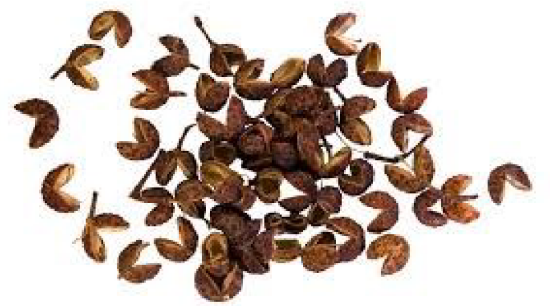
Poppy Seeds
Poppy seeds are the ripened seeds of the opium poppy, which flourishes in the Middle East and India. (When ripe, the seeds do not contain any of the medicinal alkaloids found elsewhere in the plant.) The tiny blue-gray seeds are round and hard with a sweet, nutty flavor. Poppy seeds are used in pastries and breads.
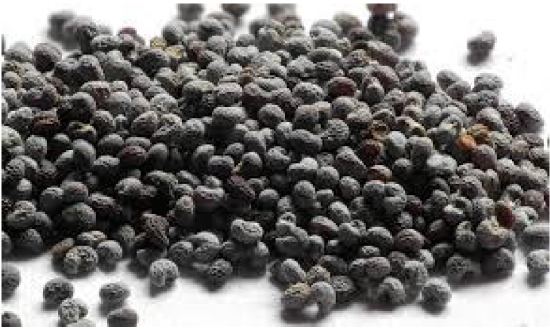
Saffron
Saffron comes from the dried stigmas of the saffron crocus. Each flower bears only three thread like stigmas, and each must be picked by hand. It takes about 250,000 flowers to produce one pound of saffron, making it the most expensive spice in the world. Beware of bargains; there is no such thing as cheap saffron. Luckily, a tiny pinch is enough to color and flavor a large quantity of food. Good saffron should be a brilliant orange color, not yellow, with a strong aroma and a bitter, honey-like taste. Saffron produces a yellow dye that diffuses through any warm liquid. Valencia or Spanish saffron is considered the finest. It is commonly used with fish and shellfish (a necessity for bouillabaisse) and rice dishes such as paella and risotto. When using saffron threads, first crush them gently, then soak them in some hot liquid from the recipe. Powdered saffron is less expensive but more easily adulterated. It may be added directly to the other ingredients when cooking.
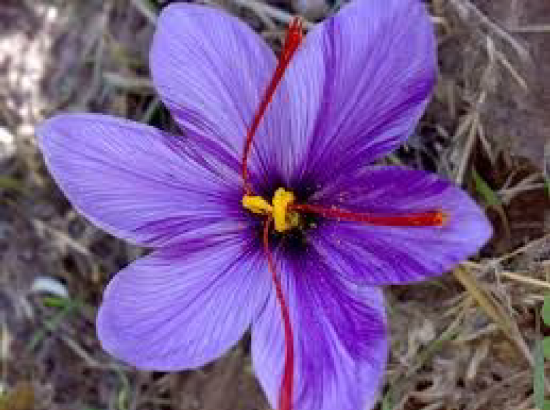
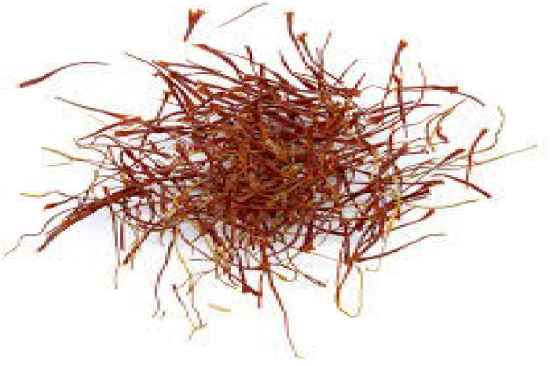
Crocus Plant Saffron Spice
Sesame Seeds
Sesame seeds, also known as benne seeds, are native to India. They are small, flat ovals, with a creamy white color. Their taste is nutty and earthy, with a pronounced aroma when roasted or ground into a paste (known as tahini). Sesame seeds are the source of sesame oil, which has a mild, nutty flavor and does not go rancid easily. Sesame seeds are roasted and used in or as a garnish for breads and meat dishes. They are popular in Indian and Asian cuisines, with a black variety of seeds most popular as a Japanese condiment.
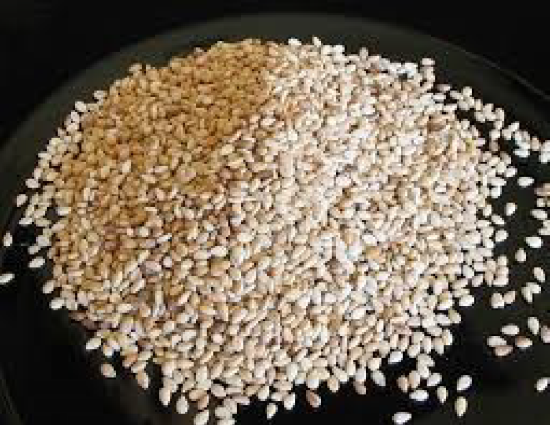
Tamarind
Tamarind also known as an Indian date, is the brown, bean-shaped pod of the tamarind tree, which is native to Africa. Although naturally sweet, tamarind also contains 12% tartaric acid, which makes it extremely tart. It is commonly used in Indian curries and Mediterranean cooking as a souring agent and in the West Indies in fruit drinks. Tamarind is sold as a concentrate or in sticky blocks of crushed pods, pulp and seeds, which should be soaked in warm water for about five minutes, then squeezed through a sieve. Tamarind's high pectin content is useful in chutneys and jams, and it is often included in barbeque sauces and marinades. It is a key ingredient in Worcestershire sauce.

Turmeric
Turmeric, also known as Indian saffron, is produced from the rhizome of a flowering tropical plant related to ginger. It has a mild, woodsy aroma. It is most often available dried and usually ground although fresh turmeric appears in ethnic markets. Turmeric is renowned for its vibrant yellow color and is used as a food coloring and dye. Turmeric's flavor is distinctive and strong; it should not be substituted for saffron. Turmeric is a traditional ingredient in Indian curries, to which it imparts color as well as flavor.
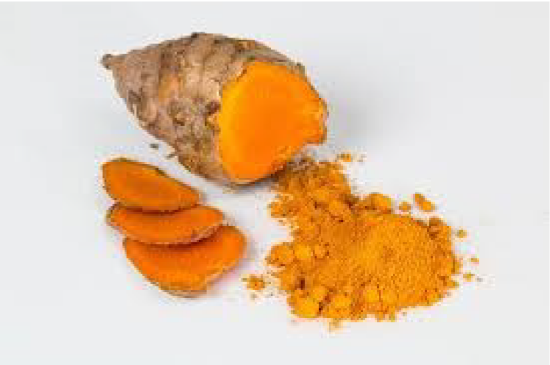
Wasabi
Wasabi is a pale green root similar, but unrelated, to horseradish. It has a strong aroma and a sharp, cleansing flavor with herbal overtones that is a bit hotter than that of horseradish. Fresh wasabi is rarely found outside Japan, but tins of powder and tubes of paste are readily available. It is commonly served with sushi and sashimi and can be used to add a spicy Asian note to other dishes, such as mashed potatoes or a compound butter.
